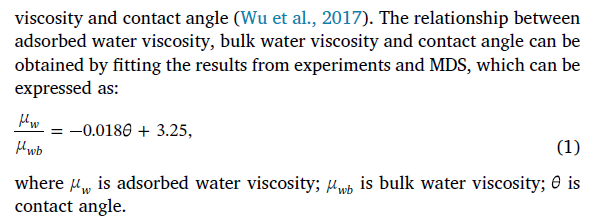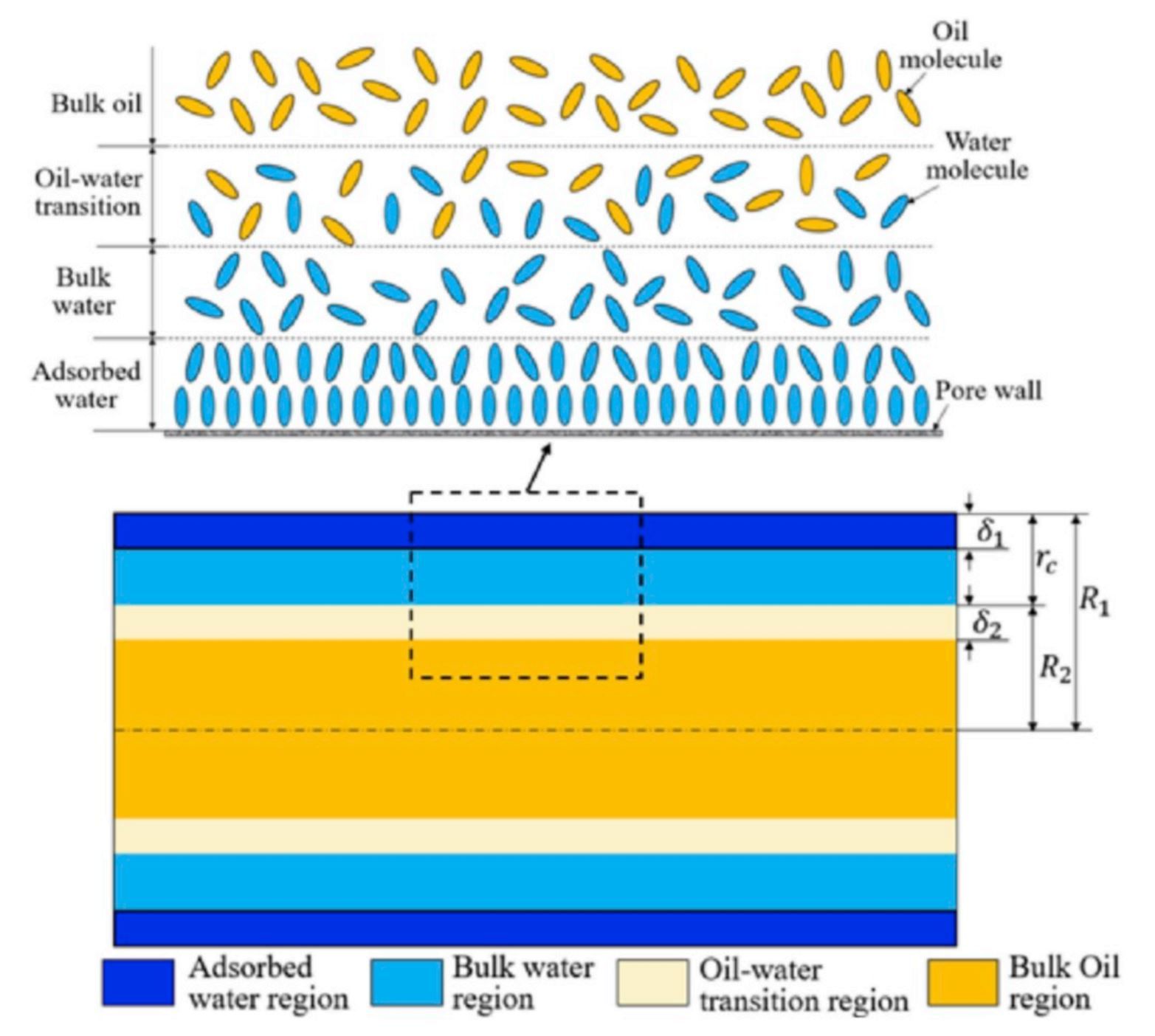如何模拟“多层”的流动
-
@东岳 老师我的想法就是把粘度固定,absorbed层是粘度1,free层是粘度2,应该如何设置呢?这个物理过程就是由于壁面相互作用,在absorbed层和free层的粘度不同。
图片摘自文章Wang, H., Su, Y., Wang, W., Li, L., Sheng, G., Zhan, S. (2019). Relative permeability model of oil-water flow in nanoporous media considering multi-mechanisms. Journal of Petroleum Science and Engineering, 183, 106361.

-

-
这个公式1没有什么物理意义,纯拟合出来的
-
另外他们这个模型有三个极为严格的假定:
There are three assumptions on the oil-water transition region: (1) the volume of oil phase equals to that of water phase; (2) the
liquid viscosity in this region is the average of the viscosity of the bulk
water and bulk oil, that is,
µ µ µ = + ( )/2 wo wb ob , where
µwo is viscosity of
oil-water transition region;
µob is bulk oil viscosity. However, for further
studies, the viscosity of this region needs to be determined by fitting
MDS results or experimental results; (3) the thickness of oil-water
transition equals to 0.7 nm and that is validated in Appendix A based on
the MDS results
所以我觉得公式(1)只适用于他们自己的数据。要实现这篇文章中下图的程序非常简单,定义不同的区域,然后给不同的粘度就行。但这个方法粘度没有任何的传输性

-
-
@东岳 老师,这个公式(1)是他们参考另一篇文章
Wu, K., Chen, Z., Li, J., Li, X., Xu, J., & Dong, X. (2017). Wettability effect on nanoconfined water flow. Proceedings of the National Academy of Sciences, 114(13), 3358-3363. https://www.pnas.org/content/114/13/3358.short
我的理解是因为在纳米管内靠近壁面的位置,粘度变化没有统一的解析解,所以看到一些文章就这么分成“多层”粘度,算是粗略简化的方法吧

 图片摘自文章Cui, J., Sang, Q., Li, Y., Yin, C., Li, Y., Dong, M. (2017). Liquid permeability of organic nanopores in shale: Calculation and analysis. Fuel, 202, 426-434.
图片摘自文章Cui, J., Sang, Q., Li, Y., Yin, C., Li, Y., Dong, M. (2017). Liquid permeability of organic nanopores in shale: Calculation and analysis. Fuel, 202, 426-434.

